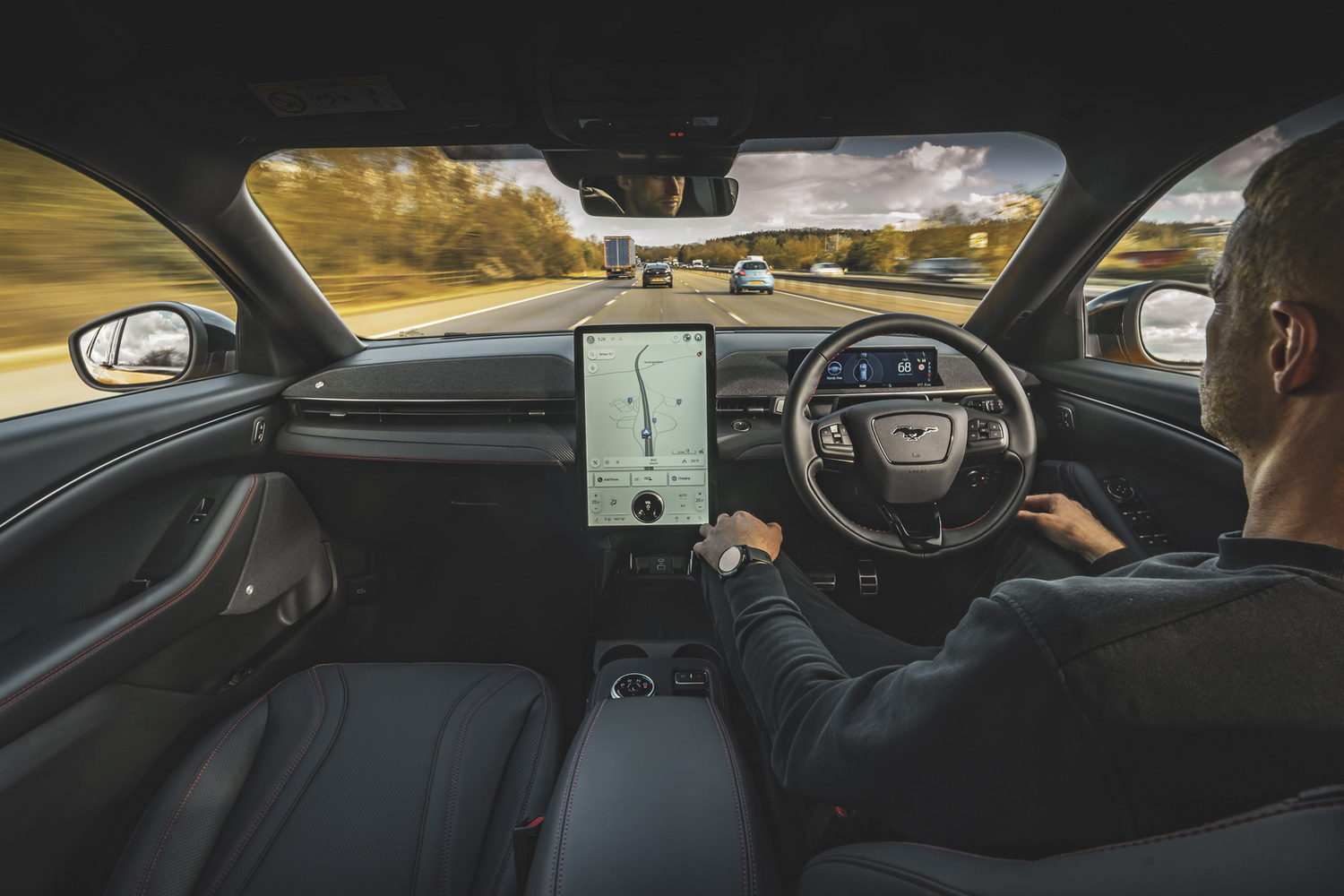The Ford Mustang Mach-E is a respectable electric SUV, offering range, tech and style in equal measure. In fact, it's so good we've almost forgiven its cynical theft (and subsequent dilution) of the fabled Mustang badge. Almost.
But in another bid for forgiveness, Ford has bestowed its foremost electric car with a clever piece of technology that brings us a step closer to autonomous driving. Yes, it's true every car maker from Tesla to Tata has promised something similar before, and we're hearing new predictions of a driverless future on an almost daily basis, but this really is a step forward that you can use today. At least in the eyes of the law.
You see, the UK government has permitted Mustang Mach-E drivers with suitably equipped vehicles to take their hands off the wheel while driving on the motorway. In theory, at least, there's no need for Mach-E drivers to touch the wheel from the minute they leave the on-ramp until they indicate to leave the motorway.
Hands off, mind on
Naturally, such technology comes with a plethora of safety-related limitations. Although Ford makes a lot of noise about the system - dubbed BlueCruise - being available on more than 3,500km of road, the truth is that certain sections of British motorway still don't allow drivers to use the system to its fullest. And even on those sections where BlueCruise is available, it doesn't offer the ability to change lanes or overtake without driver input.
Perhaps more importantly, although BlueCruise is a 'hands-off' system, it isn't 'mind-off' and drivers are required to remain as alert and involved in the drive as they would if they were driving normally. In short, you still have to concentrate and 'think' as though you're driving.
But the fact remains you can - completely legally - drive on British motorways with your arms folded or draped over the arm rests. And while your brain might have to be engaged, that's unquestionably a step towards driverless cars. And, if nothing else, it's a way of reducing driver workload on longer routes.
The question that has to be asked whenever such technology is introduced, however, has to be whether the system really is up to the job. It's all well and good telling manufacturers they can introduce these features, but if buyers feel like a passenger in a death trap or they find the technology unreliable, you might as well not bother.
So what exactly is BlueCruise like?
Unsurprisingly, the initial sensation of careering down the motorway at 120km/h without your hands on the wheel is somewhat disconcerting. It's a bit like one of those trust exercises they do at slightly earnest team-building events where you have to close your eyes and fall back in the hope your colleague won't stitch you up and step aside at the last minute. Except in this case, the colleague is replaced with a machine that doesn't have a sense of humour. You decide whether that's better or worse.
But it must be said that any fears and concerns soon give way, and you gain trust in the system pretty quickly. Within a few km, we found it remarkably dependable on a quiet motorway, keeping the car in the middle of its lane. And you quickly become accustomed to the idea of driving without steering. We thought it might be easy to get distracted, and while we certainly wouldn't recommend using the system when you're tired, it was easier to remain alert than we expected.
That said, we were helped by the car itself, which uses a driver-facing camera to monitor what's going on in the cabin and determine whether or not you're paying attention. If you're not concentrating, it'll produce increasingly eager nudges to get you back in control.
Limitations
When the traffic builds, being alert becomes more important, because as clever as the tech is in many ways, it clearly has limitations. For one, fast right-hand bends appear to catch it out slightly, and it follows the left-hand side of the lane more than we might like. That isn't such an issue when the road is quiet, but when you're overtaking a truck, it becomes a bit hair-raising.
When the road get busier still, the BlueCruise's inability to change lanes becomes irritating, forcing you to take manual control to avoid traffic pulling out or simply to make progress. That said, traffic jams show it in its best light, with the automatic pull-away function making light work of stop-start congestion.
Coming to Ireland?
To date, BlueCruise is only available in select parts of England, Scotland and Wales - it isn't even in Northern Ireland. There's no word on when it might reach these shores. And frankly, we're not missing out.
The truth of the matter is while BlueCruise is clever, it's little more than a gimmick. Although it shouldn't, it makes you more comfortable with little things like opening a drinks bottle or scoffing some crisps, but that's about the limit of its usefulness. Because you can't do anything more productive with your time while driving, it never feels like a game-changer. It's progress, no doubt, but this giant mental leap for the human behind the wheel is really just a small step on humankind's journey towards automation.


